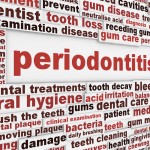
Periodontitis is a multifactorial disease that affects a significant percentage of the population with between 5-20% estimated as having severe periodontitis. Consequently identifying those at greatest risk would be beneficial. Risk factors for periodontal disease are clustered in seven groups: aetiology, genetic predisposition, medical conditions, lifestyle, psychological profile, access to care and background factors. Some or all of these have the potential to be incorporated into risk assessment tools. The aims of this review were as follows: (i) to identify the characteristics of currently published patient-based tools or systems used to assess levels of risk for periodontitis progression and (ii) systematically review the evidence documenting the use of patient-based risk assessment tools for predicting periodontitis progression.
Methods
Searches were conducted in the Cochrane Library, Medline, Embase and LILACS databases without year or language restrictions. Any published risk assessment tool was considered.
A risk assessment tool was defined to include any composite measure of patient-level risk directed towards determining the probability for further disease progression in adults with periodontitis. Study quality was assessed using the Newcastle-Ottawa Scale with data being abstracted independently by two reviewers. A narrative summary was presented.
Results
- 19 studies were included
- 10 of the studies were cohorts (involving a total of 2130 patients) with 7 of these being retrospective.
- 5 risk assessment tools were identified.
- DenPlan Excel/ Previsor® Patient Assessment (DEP- PA) and its modifications (5 papers).
- The HIDEP model, a computerised tool that used predetermined risk groups for selecting and managing individual treatment and prevention schemes. (1 paper).
- RABIT – Risk assessment-based individualized treatment (1 paper).
- The dentition risk system (DRS) at both the patient and tooth level (1 paper).
- Periodontal Risk Assessment (PRA) and its modifications (12 papers).
- 9 of 10 cohort studies reporting outcomes of 2110 patients indicate that risk assessment tools are able to identify subjects with different probability of periodontitis progression and/or tooth loss.
- Subjects with higher risk scores showed more progression of periodontitis and tooth loss.
Conclusions
The authors concluded:
In treated populations, results of patient-based risk assessments, for example periodontal risk calculator (PRC) and periodontal risk assessment (PRA), predicted periodontitis progression and tooth loss in various populations. Additional research on the utility of risk assessment and results in improving patient management are needed.
Comments
This review has a broad search strategy and focuses on the 10 cohort studies identified. In assessing the ability of risk assessment to predict disease, it is important to note that good quality prospective studies are needed. Of the 10 cohort studies that could be included only 3 of them were prospective also in view of how common periodontal disease is the numbers involved in these studies is relatively small. The results suggest that the currently available tools may be of some assistance in assessing risk. However, as the authors themselves point out there is no data on how risk assessment impacts on patient management.
Links
Lang NP, Suvan JE, Tonetti MS. Risk factor assessment tools for the prevention of periodontitis progression a systematic review. J Clin Periodontol. 2015 Apr;42 Suppl 16:S59-70. doi: 10.1111/jcpe.12350. PubMed PMID: 25496279.
Dental Elf – 1st Oct 2014 – Severe periodontitis: affected 11% of the world population in 2010

Periodontal risk assessment review http://t.co/vecaPIzMCE
Periodontal disease: risk assessment may have promise http://t.co/YtSYJ1vAQf
Risk assessment tools predict periodontitis progression suggests review http://t.co/fniomRZVuk
Higher risk scores had more periodontitis progression & tooth loss.http://t.co/HLMtFyJer3
Don’t miss – Risk assessment tools for periodontal disease http://t.co/8T6j2jebZq